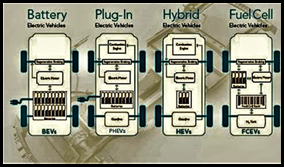Main Article Content
Abstract
In the past few years, the energy consumption of the land transportation sector has increased considerably. One of the breakthroughs by the Government through Presidential Regulation No. 22/2017 concerning General Plan for National Energy (RUEN) is the use of electricity-based vehicles to reduce fuel consumption and achieve energy security. Successful policy making for emerging industries depends on two main factors: the adoption of scientific perspectives and accuracy to predict impacts. Therefore, this review aims to conduct a study of policy simulation methodologies related to the use of electric vehicles in Indonesia. Also, identification of the gaps and limitations of previous research is carried out and recommending an agenda for further research.
Keywords
Article Details
References
- I. Sukarno, H. Matsumoto, and L. Susanti, “Transportation energy consumption and emissions - a view from city of Indonesia,” Futur. Cities Environ., vol. 2, no. 1, p. 6, 2016.
- M. Z. Irawan, P. F. Belgiawan, A.Widyaparaga, A. Budiman, I. Muthohar, and B. M. Sopha, “A market share analysis for hybrid cars in Indonesia,” Case Stud. Transp. Policy, no. September, pp. 0–1, 2017.
- Perpres 22 Tahun 2017 tentang Rencana Umum Energi Nasional.
- E. DJK, “Statistik Ketenagalistrikan 2015; 2016,” 2016.
- V. Susanti, A. Hartanto, R. A. Subekti, and H. M. Saputra, “Kebijakan Nasional Program Konversi Dari BBM ke BBG Untuk Kendaraan,” no. 21, pp. 1–10, 2011.
- K. Rong, J. Wu, Y. Shi, and L. Guo, “Nurturing business ecosystems for growth in a foreign market: Incubating, identifying and integrating stakeholders,” J. Int. Manag., vol. 21, no. 4, pp. 293–308, 2015.
- B. Lin and W. Wu, “Why people want to buy electric vehicle: An empirical study in first-tier cities of China,” Energy Policy, vol. 112, no. February 2017, pp. 233–241, 2018.
- A. E. Blomkamp, M. N. Sholikin, F. Nursyamsi, and J. M. Lewis, “Understanding Policy making in Indonesia : in Search of a Policy Cycle,” no. June, 2017.
- E. Guerra, “Electric vehicles, air pollution, and the motorcycle city: A stated preference survey of consumers’ willingness to adopt electric motorcycles in Solo, Indonesia,” Transp. Res. Part D Transp. Environ., no. December 2016, pp. 1–13, 2017.
- B. M. Sopha, C. A. Klӧckner, and D. Febrianti, “Using agent-based modeling to explore policy options supporting adoption of natural gas vehicles in Indonesia,” J. Environ. Psychol., vol. 52, pp. 149–165, 2017.
- N. Syaifudin, Nurkholis, and A. Yatim, “Fiscal Instruments to Support the Environmental Friendly Product Development in Indonesia: Hybrid Vehicle,” Energy Procedia, vol. 65, pp. 248–256, 2015.
- Y. Putrasari, A. Praptijanto, W. B. Santoso, and O. Lim, “Resources, policy, and research activities of biofuel in Indonesia: A review,” Energy Reports, vol. 2, pp. 237–245, 2016.
- G. De Marchi, G. Lucertini, and A. Tsoukiàs, “From evidence-based policy making to policy analytics,” Ann. Oper. Res., vol. 236, no. 1, pp. 15–38, 2016.
- F. Brandt, “Penn Law : Legal Scholarship Repository Shareholders vs Stakeholders Capitalism,” 2016.
- C. Chaminade and C. Edquist, “From theory to practice: the use of systems of innovation approach in innovation policy,” Pap. Innov. Stud., 2005.
- C. Lu, H. C. Liu, J. Tao, K. Rong, and Y. C. Hsieh, “A key stakeholder-based financial subsidy stimulation for Chinese EV industrialization: A system dynamics simulation,” Technol. Forecast. Soc. Change, vol. 118, pp. 1–14, 2017.
- B. Desmarchelier and E. S. Fang, “National Culture and Innovation diffusion. Exploratory insights from agent-based modeling,” Technol. Forecast. Soc. Change, vol. 105, pp. 121–128, 2016.
- N. Schieritz and P. Milling, “Modeling the forest or modeling the trees: A Comparison of system dynamics and agent-based simulation,” 21st Int. Syst. Dyn. Soc. New York, USA, 20-24 July, no. Phelan 1999, pp. 1–15, 2003.
- N. Schieritz and A. Größler, “Emergent structures in supply chains - A study integrating agent-based and system dynamics modeling,” Proc. 36th Annu. Hawaii Int. Conf. Syst. Sci. HICSS 2003, 2003.

